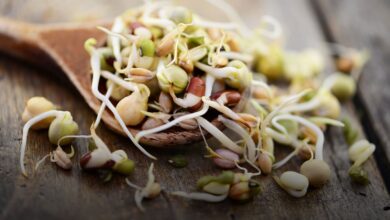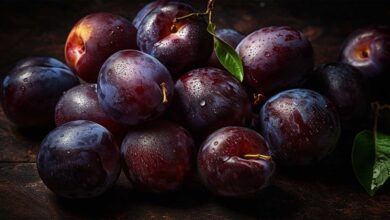Operation of the antenna sector

As we have seen in previous articles, when dealing respectively with the ATP-PCr pathways and glycolysis pathways, the body uses 3 main metabolic pathways In order to provide cells with the energy they need in the form of adenosine triphosphate (ATP).
If the ATP-PCr sector and the blood sugar sector make it possible to provide energy to the muscle, in a simplified way, without supplying oxygen, this is not the case for the oxidative sector, known as Pneumatic system. By definition, let us remember that exercise represents “all the chemical reactions that occur to an organism in the presence of oxygen” (Larousse).
Therefore, the role of oxygen in the air we breathe will be essential in the functioning of this energy pathway.
This active process occurs mainly during prolonged efforts and with intensity that may vary. The oxidative system allows, depending on the severity, to sustain efforts ranging from a few minutes to several hours.
To do this, The oxidative pathway mainly uses two substrates ; Fats are in the form of free fatty acids as well as pyruvate from the glycolysis pathway.
In the event of prolonged exercise or fasting, amino acids can also be used to produce ATP via deamination/transamination phenomena.
The body's preferential use of this or that substrate depends on several factors including the intensity of the effort, the duration of the effort, as well as environmental conditions (cold/heat/altitude, etc.).
For example, it is generally accepted that the higher the intensity of effort and the closer one gets to Vo2 max (the maximum amount of oxygen an individual can inhale, transport and consume), the more carbohydrates will serve as the predominant energy substrate. .
One study showed that from 75% of Vo2max, carbohydrate oxidation by muscle glycogen and blood glucose was significantly increased. Conversely, when the intensity of effort decreases, fatty acids will be mainly used.
Graphic credit © Docteur-fitness.com
We now know that during the first seconds of physical exercise, the body mainly uses so-called anaerobic processes to ensure the production of the necessary energy for the muscles.
The ATP-PCr pathway as well as glycolysis makes it possible to produce energy very quickly and thus support a very high intensity of effort. Remember that the latter makes it possible to produce pyruvate from carbohydrate substrates such as blood glucose and muscle and liver glycogen.
This metabolic pathway allows the production of 2 moles of ATP for every 1 mole of glucose oxidized and 3 moles of ATP if 1 mole of glycogen is hydrolyzed. Although the function of glycolysis is limited by metabolic acidosis resulting from the production of H+ ions, the pyruvate it produces still contains a large amount of potential energy.

Sketch © Hugo Desbouis
The pyruvate produced by glycolysis will then enter the… Mitochondrial matrix Through specific membrane transporters. Let us define that mitochondria are organelles found in the cytosol of eukaryotic cells and allow this Cellular respiration. As such, they are considered the “power plants” of cells.
Schematically, we can consider that at this moment the chemical processes associated with the oxidation pathway actually begin.
However, we note that there is a very strong relationship between glycolysis and the oxidation pathway. The latter will actually produce ATP from pyruvate and fatty acids, and pyruvate is obtained by anaerobic hydrolysis of carbohydrates. Didier Reis (co-author of the book “The Bible of Physical Preparation”, recognized as an expert in his field) speaks of anaerobic glycolysis as “providing fuel for part of the processes that occur in the (aerobic) mitochondria.”
Regarding pyruvate, it will initially undergo a series of chemical reactions via an enzymatic compound called… Pyruvate dehydrogenase.
This enzymatic complex will make it possible to obtain acetyl coenzyme A from pyruvate. These decarboxylation and acetyltransferase reactions will in particular produce carbon dioxide (CO2).
Pyruvate is now ready to incorporate the first step of ATP production within the oxidative pathway; Krebs cycle or triple carboxyl cycle. Let us also point out that only Acetyl-CoA bodies and ketones (acetone, acetoacetate, and β-hydroxybutyrate) can penetrate the Krebs cycle to produce energy.

Credit Scheme © Docteur-fitness.com
Regarding triglycerides, they will initially be hydrolyzed by enzymes of this type Lipase To 3 free fatty acids (FFA) and 1 group of glycerol.
Glycerin can then be metabolized within The introduction of sugarIn order to fix glucose from non-carbohydrate compounds (lactate, alanine, glycerol).
Each fatty acid obtained will then be transported specifically to the mitochondria through carnitine and translocase in order to produce acetyl-CoA; This is called beta oxidation.
Beta oxidation is a series of 4 chemical reactions that allow fatty acids to be converted into acetyl-CoA.
Once acetyl-CoA is obtained, via pyruvate or fatty acids, it will then incorporate the Krebs cycle in order to undergo a series of 8 redox reactions.
The action of several enzymes will promote the successive production of intermediate products of the Krebs cycle, among which we find citrate, alpha-ketoglutarate, succinate and even fumarate.
This chain of reactions will make it possible to produce ATP, Co2, highly active compounds such as NADH and FADH, and also H+ protons.
However, the energy contained in NADH and FADH is not directly usable by the muscle cell. Therefore NADH, FADH and protons must be transported to the electron transport chain to produce ATP and metabolic waste.

Credit Scheme © Docteur-fitness.com
This electron transport chain, also called the respiratory chain, is located in the inner mitochondrial membrane (see diagram below).
It is composed of 4 non-motile protein complexes plus mobile cofactors that allow the transfer of electrons between different protein complexes in the chain.
Complex 1, known as the NADH dehydrogenase complex, allows the transfer of 4 protons from the intramitochondrial space to the intermembrane space.
At the same time, NADH,H+ will be oxidized and thus transfer two electrons to ubiquinone, a molecule that shuttles between complexes 1, 2 and 3 of the respiratory chain.
By accepting electrons from compound 1, ubiquinone Q (known as coenzyme Q10) will temporarily become paraquinone Q⁻.
And then it's compound number 2, called succinate dehydrogenase, which will allow the transfer of electrons to the paraquinone molecule. Thus the latter will become ubiquinol QH2. Note also that this compound #2 ensures electron transfer through oxidation of the coenzyme FADH2 but does not allow the release of protons into the intermembrane space.
Ubiquinol will then join compound 3, called the cytochrome reductase complex, in order to oxidize it to reform ubiquinone.
So Ubiquinone will be able to return to the level of the first compound to once again take over the electrons from NADH.
This oxidation will make it possible to transfer electrons from ubiquinol to compound 3, which will itself transfer these electrons to cytochrome C, a molecule that in turn shuttles between compounds 3 and 4. This transfer of electrons between compound 3 and cytochrome C allows 4 to be expelled. Protons from the mitochondrial matrix to the intermembrane space.
In the next step, cytochrome C will bind to the fourth and final compound in the electron transport chain; This is the cytochrome oxidase complex.
This latter complex again makes it possible to extract two protons from the mitochondrial matrix towards the intermembrane space. Finally, the electrons at the level of complex IV will react with protons as well as with dioxygen to form H20 water molecules, the final product of the respiratory chain and oxidation pathway. Oxygen actually acts as a final acceptor for electrons and protons according to the following reaction equation:
2 electrons + 2 h+ + ½ x2 -> h20
Finally, also note that ATP production within the electron transport chain will be enabled thanks to the inverted proton pump, also known as the ATP synthase pump.
Since the electron transport chain allows the passage of 10 protons from the mitochondrial matrix to the intermembrane space and requires 3 protons to synthesize one molecule of ATP, we can conclude that the reverse proton pump (from the intermembrane space of the mitochondrial matrix) allows the production of 3 ATP molecules.

Credit Scheme © Docteur-fitness.com
This ATP production occurs through the establishment of a proton gradient on both sides of the inner mitochondrial membrane and finally through oxidative phosphorylation.
Thus most ATP production within the oxidative pathway occurs within the electron transport chain.

Credit Scheme © Docteur-fitness.com
Through this article, we have seen that the oxidative pathway is an energy pathway that allows the resynthesis of ATP within mitochondria through cellular respiration.
ATP production within mitochondria is obtained mainly from pyruvate, resulting from glycolysis, as well as oxidation of triglycerides found in adipose tissue as well as within muscle cells.
These substances will then be hydrolyzed into acetyl-CoA in order to complete the Krebs cycle.
During this cycle, ATP will be produced as well as compounds such as NADH and FADH2 as well as protons and carbon dioxide.
NADH and FADH2 will eventually be transported to the respiratory chain in order to bring in dioxygen for the production of ATP and water.
Since exercise uses pyruvate produced during anaerobic glycolysis of carbohydrates, it seems important to emphasize the very strong relationship between glycolysis and oxidation processes. This again indicates that there are permanent interactions between the three main energy pathways allowing the resynthesis of ATP.
Operation of the antenna sector


